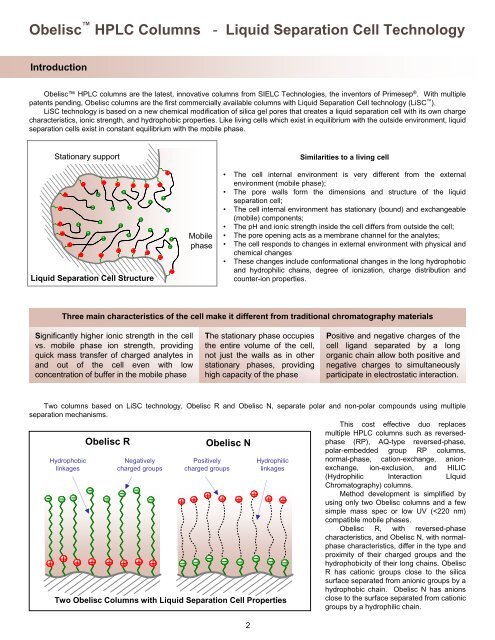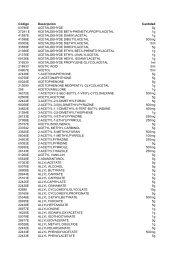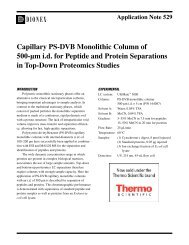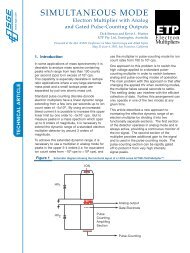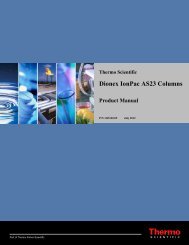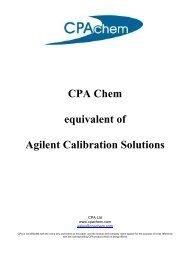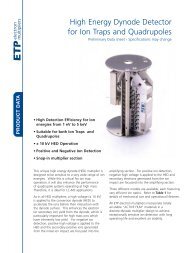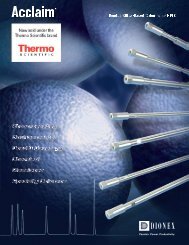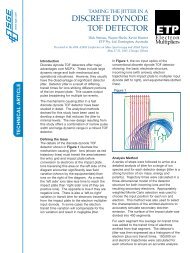Obelisc⢠HPLC Columns - Labicom
Obelisc⢠HPLC Columns - Labicom
Obelisc⢠HPLC Columns - Labicom
You also want an ePaper? Increase the reach of your titles
YUMPU automatically turns print PDFs into web optimized ePapers that Google loves.
Obelisc <strong>HPLC</strong> <strong>Columns</strong><br />
- Liquid Separation Cell Technology<br />
Introduction<br />
Obelisc <strong>HPLC</strong> columns are the latest, innovative columns from SIELC Technologies, the inventors of Primesep ® . With multiple<br />
patents pending, Obelisc columns are the first commercially available columns with Liquid Separation Cell technology (LiSC ).<br />
LiSC technology is based on a new chemical modification of silica gel pores that creates a liquid separation cell with its own charge<br />
characteristics, ionic strength, and hydrophobic properties. Like living cells which exist in equilibrium with the outside environment, liquid<br />
separation cells exist in constant equilibrium with the mobile phase.<br />
Stationary support<br />
Liquid Separation Cell Structure<br />
Mobile<br />
phase<br />
Similarities to a living cell<br />
• The cell internal environment is very different from the external<br />
environment (mobile phase);<br />
• The pore walls form the dimensions and structure of the liquid<br />
separation cell;<br />
• The cell internal environment has stationary (bound) and exchangeable<br />
(mobile) components;<br />
• The pH and ionic strength inside the cell differs from outside the cell;<br />
• The pore opening acts as a membrane channel for the analytes;<br />
• The cell responds to changes in external environment with physical and<br />
chemical changes<br />
• These changes include conformational changes in the long hydrophobic<br />
and hydrophilic chains, degree of ionization, charge distribution and<br />
counter-ion properties.<br />
Three main characteristics of the cell make it different from traditional chromatography materials<br />
Significantly higher ionic strength in the cell<br />
vs. mobile phase ion strength, providing<br />
quick mass transfer of charged analytes in<br />
and out of the cell even with low<br />
concentration of buffer in the mobile phase<br />
The stationary phase occupies<br />
the entire volume of the cell,<br />
not just the walls as in other<br />
stationary phases, providing<br />
high capacity of the phase<br />
Positive and negative charges of the<br />
cell ligand separated by a long<br />
organic chain allow both positive and<br />
negative charges to simultaneously<br />
participate in electrostatic interaction.<br />
Two columns based on LiSC technology, Obelisc R and Obelisc N, separate polar and non-polar compounds using multiple<br />
separation mechanisms.<br />
This cost effective duo replaces<br />
multiple <strong>HPLC</strong> columns such as reversedphase<br />
(RP), AQ-type reversed-phase,<br />
Obelisc R<br />
Obelisc N<br />
polar-embedded group RP columns,<br />
Hydrophobic<br />
Negatively<br />
Positively<br />
Hydrophilic<br />
normal-phase, cation-exchange, anionexchange,<br />
ion-exclusion, and HILIC<br />
linkages<br />
charged groups charged groups linkages<br />
(Hydrophilic Interaction LIquid<br />
Chromatography) columns.<br />
Method development is simplified by<br />
using only two Obelisc columns and a few<br />
simple mass spec or low UV (


